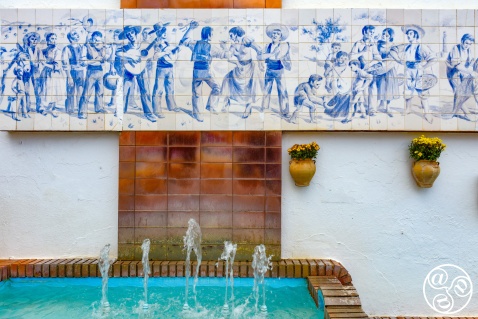
The wine culture also had great importance in the area during the Roman era |
|
History of Benalmadena history
Perched 280 meters above sea level in the mountains between the village of Mijas and the Mediterranean coastline, Benalmádena Pueblo is one of the most popular tourist destinations in Malaga. The town has a large expat population, although it has managed to retain the ambience of a sleepy white Andalusian village.
Evidence found in three local caves(Cuerva del Toro, Cuerva del Botijo and Cuerva de la Zorrera) indicate that the area was first populated around 20,000 years ago. The Phoenicians profited from the mining in the area, (the name of Benalmádena is thought to relate to the mines) and the Romans replaced them as traders.
Among the Roman ruins to be found in Benalmádena is the Benal-Roma salting factory located on the coast. The wine culture also had great importance in the area during the Roman era, but it was to be the Muslims that would greatly develop the area.
In the 11th century, the Moors erected a fortress and built a wall around the village. They developed agriculture and introduced sugar cane, figs and mulberry, which was used in the textile industry.
Ibn al-Baytar, considered one of the greatest scientists of al-Andalus and the most celebrated botanists of the Islamic golden age, was born in Benalmádena at the end of the 12th century. He systematically recorded the discoveries he made during the Middle Ages and he created the first encyclopaedia of Islamic medicine. One of his greatest achievements was the discovery of Hindiba, the earliest known herbal treatment for cancer.
The town and the fortress were destroyed by the Christian armies in the 15th century and the villagers took refuge in Mijas, which was also destroyed in the final conquest by Ferdinand and Isabela. The town remained deserted for many years because of constant Barbary pirate attacks and following an earthquake in the 17th century, it became inhabitable.The area began to thrive again in the 18th century with the development of nearby Arroyo de la Miel, and in the 19th century, due to the abundance of the muscatel grape that thrived in the area. Benalmadena Pueblo began redevelopment during the 1950s with the birth of the tourist industry.